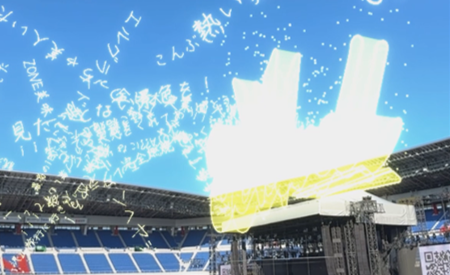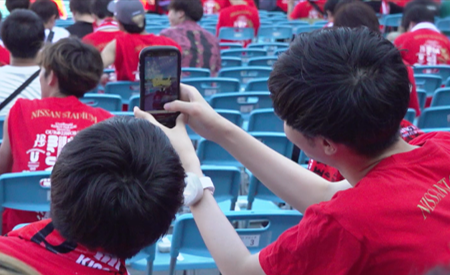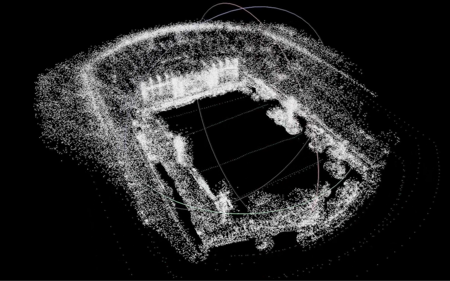SOLUTION INTRODUCTIONAudience-Participatory Spatial Content "SPARC"
BACKGROUND
The values modern consumers prioritize have shifted from consumption and ownership to experiences. Specifically, there is a growing demand for immersive entertainment and interactive content that allows for direct participation and engagement. In recent years, Japan has experienced a surge in inbound tourism and the growth of niche, dedicated communities such as fan activities and fandoms, which has driven the popularity of location-based services that cater to these needs. Traditionally, providing such services and contents required complex hardware including staging equipment and specialized setups for these communities.
Implementation items
During a concert by the rock band UVERworld at Nissan Stadium, which attracted a crowd of 140,000, we introduced an interactive spatial content experience. Concertgoers could send messages of up to 15 characters from their smartphones into the air. These messages, numbering in the tens of thousands, floated around the stadium, creating a vibrant display that illuminated the entire venue. Eventually, the messages gathered above the stage, transforming into the UVERworld logo. This content successfully visualized the emotions and energy of the audience, creating an experience that allowed attendees to understand and empathize with one another.
Technical features
The Visual Positioning System (VPS) technology, which detects positional information within centimeters based on camera data from smartphones, is notable for its high precision in augmented reality (AR) experiences. By accurately determining the position and orientation of users' smartphones, VPS enables a seamless integration of the real world and computer-generated imagery, delivering a more natural and immersive AR experience. This technology facilitates the rapid and flexible deployment of high-precision AR by pre-scanning buildings and other physical structures. Our browser-based platform for this audience-participatory spatial content allows users to easily participate in AR experiences without the need for specialized applications. Designed to accommodate high volumes of simultaneous access, it ensures scalability and robust performance for large events. The system's ability to visualize and share individual experiences in public spaces such as city centers and stadiums offers innovative possibilities for a variety of applications, including large-scale sporting events and commercial exhibitions.



- Realize Mobile Communications Corp. ホーム
- SOLUTION INTRODUCTION
- Mixed Reality Technology